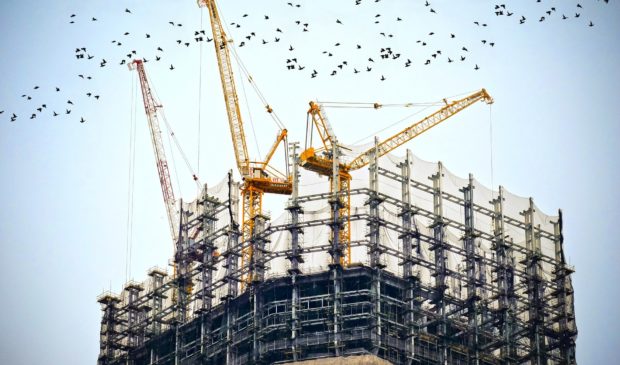Public Safety Commission dives into building material safety
Thursday, January 9, 2020 by
Jessi Devenyns Fire unquestionably presents a risk to public safety. However, a less visible risk associated with a burning building are the toxic chemicals used in building materials that can damage the health of first responders and homeowners who inhale the fumes they emit.
According to local environmental activist and researcher Paul Robbins, three of the most harmful chemicals frequently used in the construction of buildings are PVC, perfluorocarbons and antimicrobials. “There are certainly a number of others,” he told the Public Safety Commission at its Jan. 6 meeting. However, those three chemical classes “are so pervasive and, in their own way, so dangerous.”
PVC and perfluorocarbons are particularly detrimental as they can take hundreds of years to biodegrade and have been linked to cancer, high cholesterol and thyroid disorders in humans who have been exposed.
The Austin Fire Department is aware of the risks of these chemicals and has taken measures over the years to better protect its employees. Division Chief Rob Vires told the commission that the department has adjusted the way firefighters remove their gear on-site to minimize exposure to carcinogens. Likewise, the department has made continuous adjustments to protective equipment to protect first responders from the off-gassing materials and contaminated particles left in the wake of a fire.
While they’re a primary population of concern, Commissioner Preston Tyree pointed out that first responders are not the only citizens that the city should consider. Homeowners and individuals who clean up after a fire also risk being exposed. The city should work toward reducing the risk for all parties, he noted. “The toxic gas is being let off by the building materials. We probably ought to know about it, and we probably ought to be working to stop it,” he said.
Kurt Stogdill with Austin Energy said that the utility has not pushed for the codified prevention of materials that become toxic when burned. However, sections in the code enumerate various toxic building materials, including asbestos, that are precluded from use in construction.
The utility has been working with the Fire Department to advise on the Wildland-Urban Interface Code, recommending the use of building materials that are less likely to catch on fire in the first place.
Austin Energy has been regulating materials through its Green Building Program, a rating system used for evaluating the sustainability of buildings based on materials used, energy efficiency, water quality, and transportation options. Heidi Kasper with the Green Building Program told the Austin Monitor, “For ages, we’ve required low VOC (volatile organic compound) paints.” Other parts of the program list preferred materials that are low-VOC or nontoxic, but they are not required. The voluntary program allows for a buffet-style selection of sustainable building practices to reach higher ratings, though Robbins explained that toxic chemicals are just as prevalent in green structures as in conventional construction.
Part of the reason toxic chemicals are used in green building materials is that the industry guards the composition of materials as proprietary information, Kasper told commissioners. “There’s movement right now to get a lot more transparency,” she said.
Austin Energy tracks a variety of toxic chemicals on a “red list” developed by the International Living Future Institute that allows the utility to keep track of toxins like formaldehyde and volatile organic compound paints that the industry is phasing out and provide guidance to builders when selecting materials.
Since the Green Building Program is voluntary, Kasper explained that there are no cash incentives to encourage nontoxic, sustainable construction. However, she did note that there is a continual evolution around what is considered safe for the environment and for human beings. “We’re actively developing innovation guides,” Kasper said, to keep up and encourage builders to use the latest sustainable options, including less toxic materials.
Kasper told the Monitor that when these guides become available they will serve as a menu of ideas for developers and include sustainable new solutions, including a reduction in the use of toxic building materials. “(It’s) a library of ideas,” she said. “And we need somebody to test them out.”
The Austin Monitor’s work is made possible by donations from the community. Though our reporting covers donors from time to time, we are careful to keep business and editorial efforts separate while maintaining transparency. A complete list of donors is available here, and our code of ethics is explained here.
You're a community leader
And we’re honored you look to us for serious, in-depth news. You know a strong community needs local and dedicated watchdog reporting. We’re here for you and that won’t change. Now will you take the powerful next step and support our nonprofit news organization?









